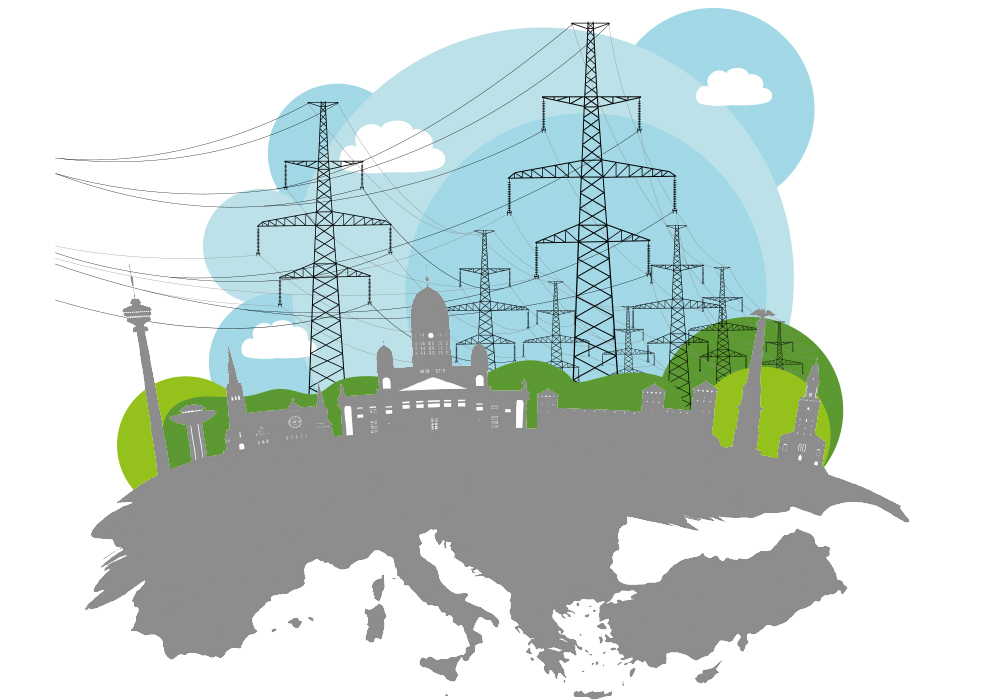Common marketplaces for balancing energy will be implemented throughout Europe. According to the Electricity Balancing Guideline, the deadline for implementation is the beginning of 2022.
“From the balancing market party standpoint, a common balancing energy market area will expand from the Nordic to the European scale,” says Development Manager Jyrki Uusitalo from Fingrid.
“A Finnish market party that has flexible capacity can sell it in a European marketplace. Of course, the market itself will grow and demand may increase at the same time,” states Uusitalo. He estimates that the creation of a common pan-European marketplace will also increase competition between different participants.
The national transmission system operator will continue to be the interface with balancing market parties, so Fingrid will handle bids and activation requests in the future as well. Leading Specialist Jarno Lamponen from the Energy Authority says that expanding the balancing markets to cover Europe is a natural step.
“Flexible production and consumption will be utilised as effectively as possible on European platforms,” states Lamponen. However, he also says that completely new technology solutions are needed to make this possible.
Manual and automatic trading
Implementation projects for European marketplaces are already in progress. The marketplace for manual products is called MARI and the automatic marketplace is called PICASSO. Jyrki Uusitalo explains that in MARI the transmission system operator makes the balancing decision, while in PICASSO they are made by computers.
“Today the main product is still manual, but we’re moving towards automation all the time.
Digitalisation has already had a big impact on marketplaces: five years ago we were still implementing activation requests by phone and now we handle the same actions electronically with a click of the mouse,” says Uusitalo.
The automatic product was introduced in the Nordic area in 2013 and so far it has only been used during certain morning and evening hours. “The automatic product has provided support when there have been a lot of changes in the power system. It will be used more in the future,” explains Uusitalo.
Common playing rules
However, the MARI manual product is still the primary choice. Martin Høgh Møller from Denmark has chaired the MARI Steering Committee for four years. He says that creating a pan-European alliance has not always been easy, but the project has gradually spread from Northern Europe to encompass 30 countries.
The main outcome of this work is the 50-page MARI rulebook, which was handed over to EU Member State regulators on 18 December 2018. “Now we want to move from planning and design to implementation,” says Møller.
Before the system can be put into action, each country’s energy authority or a corresponding body has to approve the project. “Each regulator has six months to grant its approval,” adds Møller, whose works as Chief International Policy Advisor for the Danish TSO Energinet.
There are also question marks associated with the actual implementation, such as what kind of organisation should be built for MARI. In addition to the administrative and legal side, there’s a lot of work ahead in terms of information technology:
“Having 30 countries involved means that this is not only a very large IT project but also a major diplomatic effort.” Although the deadline for implementation is the start of 2022, Møller says that the situation may still change after this.
“It could be 4–5 years before all the TSOs are connected to the platform.”
New product specifications
The new marketplaces will also cause changes in product specifications. At this point, it appears that manual balancing (mFRR) will have to be fully activated in 12.5 minutes and automatic (aFRR) in 5 minutes. The 15-minute product duration will come to the balancing power market during this phase at the latest.
“Since every country has previously used its own product specifications, we’ve had to do a lot of harmonisation,” describes Jyrki Uusitalo.
When the new marketplaces become available, balancing energy bids must be submitted to local TSOs at least 25 minutes before the start of trading. That deadline is 45 minutes in the current system.
“The smallest possible bid size at this time is 5 megawatts, but it will decrease to 1 megawatt, allowing participation in the market even with a small bid.”







